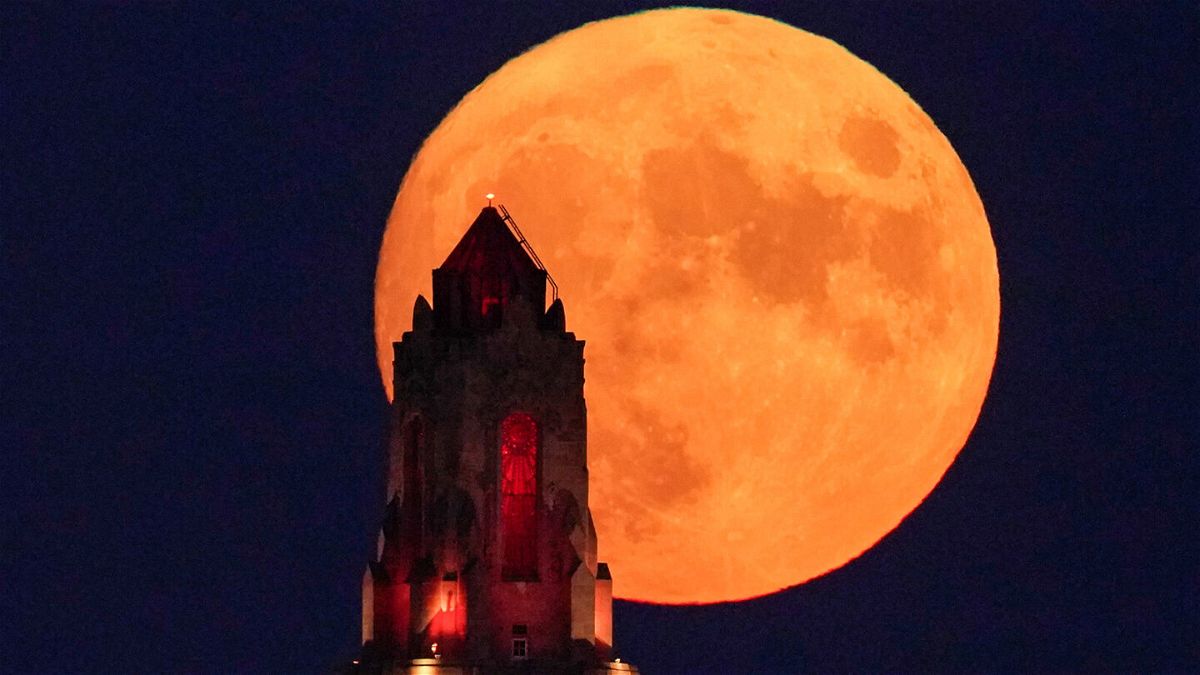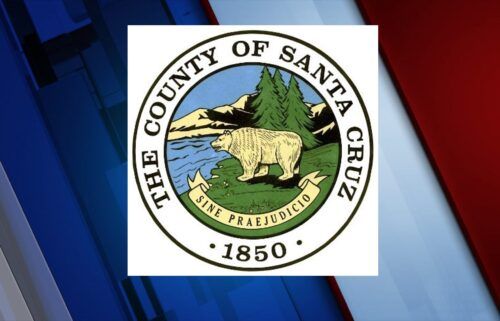Summer’s last supermoon and meteor shower take the celestial stage tonight

This summer's last supermoon and meteor shower takes place on August 11. The August full moon
By Kristen Rogers and Ashley Strickland, CNN
Tonight’s sturgeon supermoon could have you dancing in the moonlight — the type that only happens three to four times per year.
Named by the Native American Algonquin tribe after sturgeon fish that were more easily caught in the Great Lakes and other bodies of water during this time of year, the sturgeon moon ends 2022’s series of four supermoons, which began in May, according to The Old Farmer’s Almanac. After sunset, look toward the southeast to watch this supermoon rise. It will reach peak illumination at 9:36 p.m. ET Thursday.
“At certain times of the year, the moon is at its closest point to Earth and these are called supermoons,” said Mike Hankey, operations manager for the American Meteor Society, via email. “It’s just a natural point of the moon’s orbit. At each extreme, the moon is either a little bigger or a little bit smaller (at its furthest point), but it is not a huge difference.”
This nearest proximity is called the perigee, and it is only about 226,000 miles (363,300 kilometers) from Earth, according to NASA. That’s why a supermoon also appears slightly brighter than a regular full moon. The moon’s distance from Earth changes throughout the month since its orbit isn’t a perfect circle, according to The Old Farmer’s Almanac.
If you take a cool photo of the supermoon, you could share it on social media with the hashtag #NASAMoonSnap — the phrase NASA is using to track moon-inspired content leading up to the late-summer launch of Artemis I, the first test flight of the rocket and spacecraft that will send future astronauts to the moon, according to NASA’s Tumblr. The agency has shared a guide for photographing the moon, and will share some users’ content on its social media platforms during the launch broadcast.
The sturgeon moon will steal the spotlight of the Perseid meteor shower peaking Thursday through Saturday.
“Bright moon phases are bad for meteor showers as they wash out the dimmer meteors,” Hankey said. “A full or almost full moon dominates one part of the sky, making that part undesirable for observing meteors. The full moon also lasts the entire night, leaving no hours of complete darkness, which is preferred.”
The Perseid meteor shower lasts from July 14 to September 1, and this year’s barely visible peak will happen at 11 p.m. ET on Friday (3:00 a.m. UTC Saturday), according to EarthSky. In previous years, the Perseids have been a highly anticipated shower in the Northern Hemisphere, where it’s usually more visible. But that’s only when the moon isn’t in a phase dominating the sky.
This year, the Perseids — which strengthen in number from late evening to early dawn — were more visible in early August when the moon appeared smaller and dimmer. In previous years, they were most visible in nearly moon-free skies.
The shower’s fragments come from comet 109P/Swift-Tuttle, which takes 133 years to orbit the sun just once, according to NASA. The comet last entered the inner solar system in 1992.
Remaining space events in 2022
Four more full moons will occur this year, according to The Old Farmer’s Almanac:
- September 10: Harvest moon
- October 9: Hunter’s moon
- November 8: Beaver moon
- December 7: Cold moon
Other Native American tribes have different names for the full moons, such as the Cheyenne tribe’s “drying grass moon” for the one happening in September, and the Arapaho tribe’s “popping trees” for the full moon occurring in December.
Catch the peak of these upcoming meteor shower events later this year, according to EarthSky’s 2022 meteor shower guide:
- Draconids: October 8-9
- Orionids: October 20-21
- South Taurids: November 5
- North Taurids: November 12
- Leonids: November 17-18
- Geminids: December 13-14
- Ursids: December 22-23
And there will be one more total lunar eclipse and a partial solar eclipse in 2022, according to The Old Farmer’s Almanac. The partial solar eclipse on October 25 will be visible to people in Greenland, Iceland, Europe, Northeast Africa, the Middle East, West Asia, India and western China.
The total lunar eclipse on November 8 can be seen in Asia, Australia, the Pacific, South America and North America between 3:01 a.m. ET and 8:58 a.m. ET. But for people in Eastern North America, the moon will be setting during that time.
Wear proper eclipse glasses to safely view solar eclipses, as the sun’s light can damage the eye.
The-CNN-Wire
™ & © 2022 Cable News Network, Inc., a Warner Bros. Discovery Company. All rights reserved.



